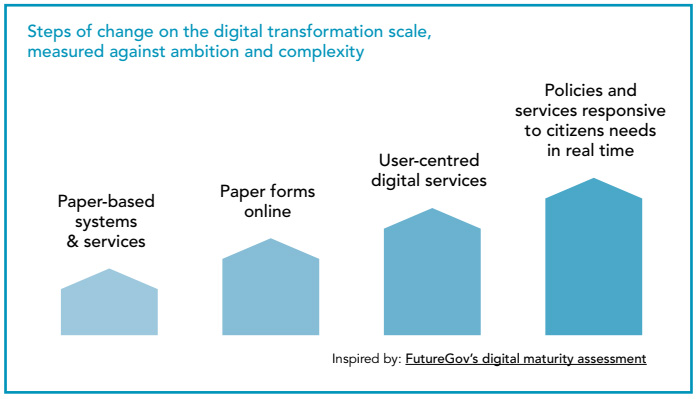Introduction
ASToN cities are aiming to become local authorities capable of designing and delivering better public policies, co-designed with the citizens and that respond to their changing needs and expectations. In order to achieve these aims, cities are embarking on a journey of digital transformation and building up the capabilities of a ‘smart city’.
We see digital transformation as a journey away from paper-based systems to using digital and technology to deliver urban policies and services more effectively. In order to do this, we know it involves more than technology, it must involve the empowerment of city practitioners and citizens.
But cities should also look beyond the digitisation of existing paper forms to the digitalisation of entire service delivery. This means using technology alongside new ways of working and new types of business or operational models.
Central to digital transformation is the concept of user-centred design (or human-centred design). This is an approach to problem solving which involves the human perspective in all parts of the process. These approaches apply well beyond the development of digital products but can be used to ensure policies and services are designed with citizens, and provide ongoing channels for citizen participation.
Successful digital transformation is complex and multifaceted. It requires the empowerment of those working in the local authority – giving them the skills and capabilities to use technology, make partnerships across the digital ecosystem, and engage specialists where appropriate.
To assess how ready cities are for digital transformation, we consider the digital maturity of the local authority and the territory. The characteristics of this are explored in more detail on the next page.



